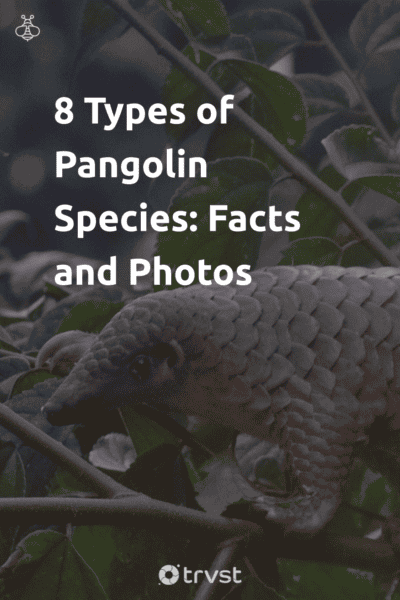8 Types of Pangolin Species: Facts and Photos
Pangolins are ball-like armored creatures with unique behaviors, habitats, and diets. Since these insectivores can be found on two continents, expect diversity. In this article, deepen your appreciation as you explore the distinctions among eight types of pangolin species.
Pangolin Classification
Eight pangolin species belong to the Pholidota order and are divided into three genera. The Asian pangolins are part of the Manis genus, while the African species belong to the Phataginus and Smutsia genera.
These so-called scaly anteaters can thrive in various environments, from the Himalayan foothills to Africa's dry savannah. Regarding conservation status, all eight species are endangered. Three are critically endangered, three are endangered, and two are vulnerable.
Read more: Pangolin Facts.
8 Types of Pangolin
Quick links to the types of pangolin:
1. Chinese Pangolin (Manis pentadactyla)
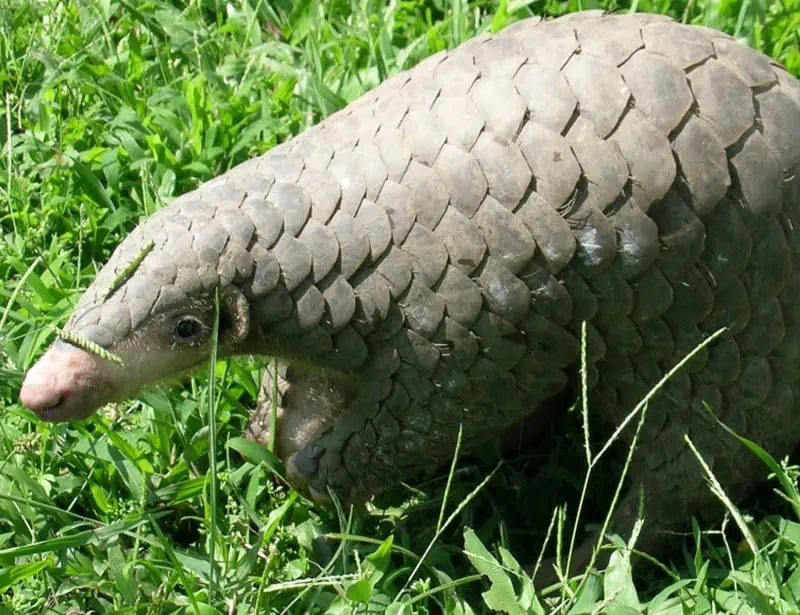
The Chinese Pangolin is a nocturnal mammal found in various landscapes, including the northern Indian subcontinent, Southeast Asia, and southern China. It spends its days resting in burrows, especially during winter, and comes out at night to search for food.
Moreover, the large overlapping pangolin scales are made of keratin, which protects predators. These scales allow the pangolin to curl up into a ball for safety. Its diet primarily consists of ants and termites, and it uses its long, sticky tongue to raid insect nests.
To distinguish this type of pangolin, look out for its helmet-like appearance, smaller scales, and larger ear pinna to define this species. Noteworthy, too, is its post-anal skin depression and tapered tail. Unlike arboreal pangolins, this one is more of a digger specialist.
The Chinese Pangolin faces critical endangerment2. Poaching for traditional medicine and economic gains poses significant threats. Weak law enforcement also contributes to the uncertainty of its survival.
2. Sunda Pangolin (Manis javanica)
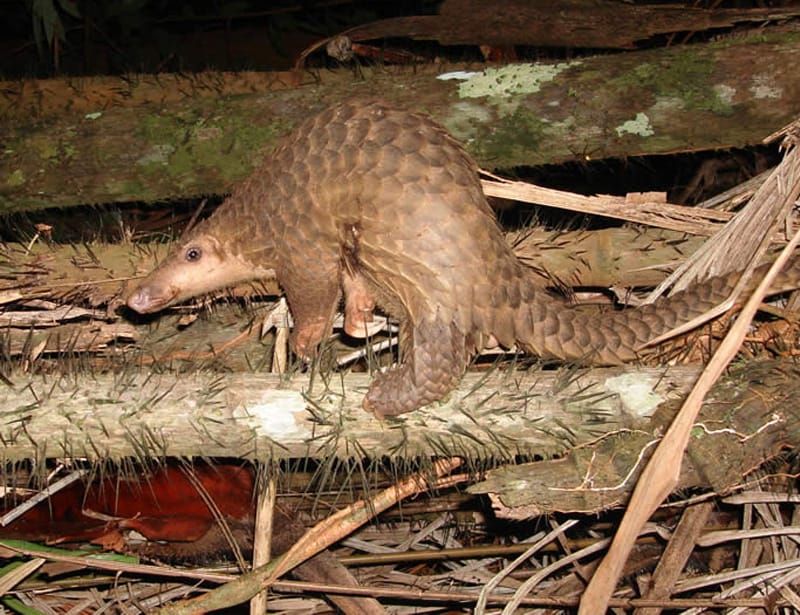
The Sunda pangolin, also called the Malayan or Javan pangolin, is a solitary creature living in Southeast Asia’s forests. It exhibits olive-brown to yellowish hard scales and whitish to pale-brown hair on its underbelly and face, constituting a grayish-to-bluish skin tone.
Distinct from the Chinese species, the Sunda Pangolin possesses fewer back scales, shorter claws, and a slim, lengthy tail. More arboreal, it spends considerable time living among trees, a lifestyle matched to its physical adaptations.
Sadly, the critically endangered Sunda Pangolin has a declining population due to hunting and poaching3.
3. Indian Pangolin (Manis crassicaudata)
The Indian Pangolin, found across vast regions in Asia, predominantly spans from the southern parts of Sri Lanka to the northernmost frontiers of Nepal. The creature adapts well to desert regions, exhibiting a preference for barren, hilly terrains.
Their natural homestead extends, most significantly, to subtropical thorny forests and the noteworthy Salt Range. They've been observed up to elevations of 2,500 ft, where the soil quality tends to be semi-sandy and excellent for burrowing.
A key attribute of this species is its light-colored, striped scales. Its broad, edible insect diet includes ants and termites, and it requires a freshwater source. The Indian Pangolin's versatile survival skills allow it to inhabit various tropical forests, open lands, grasslands, and nearby villages.
Packers and hunters’ attention to this species has intensified following observed declines in the population of the Sunda and Chinese Pangolins4. Currently, they have the IUCN endangered status. With collective conservation efforts, hopefully, there will be no critically endangered Indian pangolin in the future.
4. Philippine Pangolin (Manis culionensis)
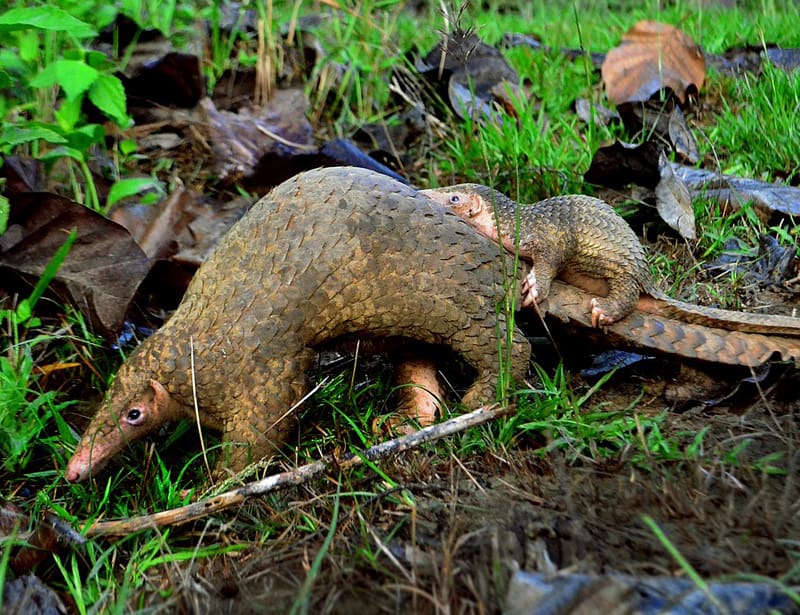
The Philippine Pangolin resides exclusively in the Philippines across four specific islands: Palawan, Busuanga, Culion, and Calauit. This solitary mammal has adapted to various habitats, including lowland forests and grasslands, even expanding into agricultural areas as their native territories face devastation.
Recognized as a separate species from the Sunda pangolin in 1998, the Philippine pangolin has its own distinct features. It has the highest number of rows across its back among Asian pangolins. Other distinctive characteristics include smaller scales and a shorter head-body-to-tail length ratio.
Researchers hypothesized rising sea levels isolated the Philippine pangolin1, severing a Borneo land bridge, thus prompting their unique evolution.
Unfortunately, the Critically Endangered Philippine pangolin faces hunting and poaching driven by illegal international trade. The development of the islands also threatens this species.
5. White-bellied Pangolin (Phataginus tricuspis)
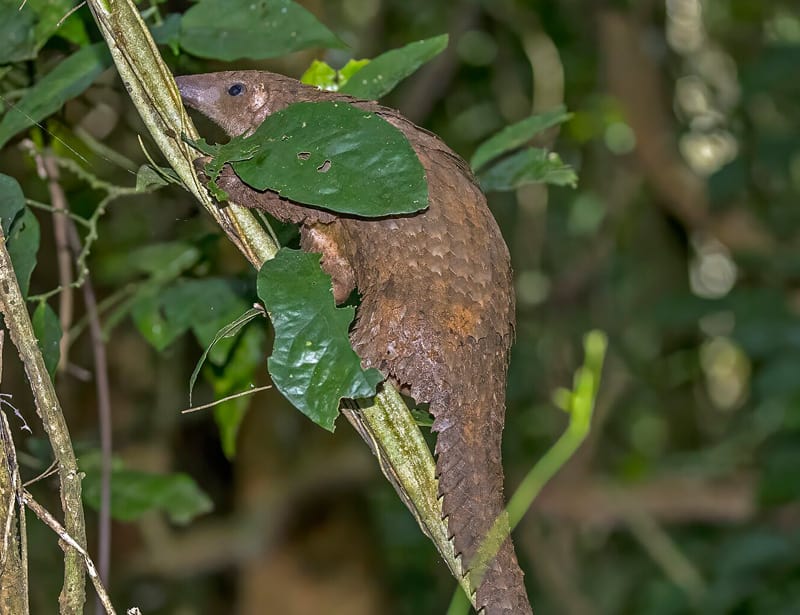
The White-bellied Pangolin, also known as the Tree Pangolin, is the smallest pangolin species. This semi-arboreal and nocturnal creature lives in the forests of Central and West Africa.
These African pangolins have large, yellow-brown scales that harden as they grow, which become a natural shield against predators. Its tail has no scales but helps the pangolin move effortlessly through tree branches like an acrobat. Moreover, its long tail is shorter than that of the next type of pangolin.
Sadly, the White-bellied Pangolin faces many threats, including overexploitation, habitat loss, and degradation. It recently became an endangered species on the IUCN Red List in 2019.
6. Black-bellied Pangolin (Phataginus tetradactyla)
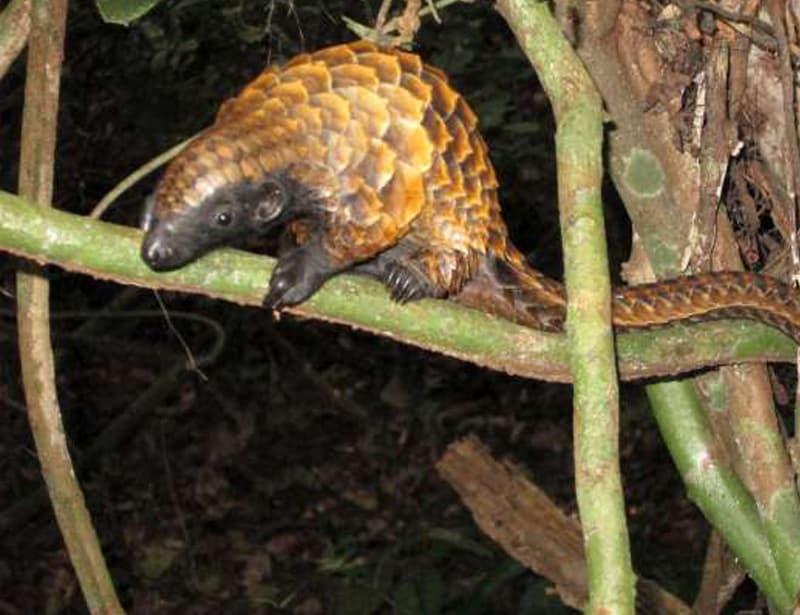
The Black-bellied Pangolin is a small mammal inhabiting the rainforests of Angola, Cameroon, the Central African Republic, Congo, and Gabon.
Also called the Long-tailed pangolin, Its long tail helps the animal climb and swing from branches. Interestingly, it is almost twice the length of its body. Still, this African pangolin is the smallest of all pangolin species.
Going through challenges similar to those of the previous type of pangolin, the Black-bellied pangolin has the IUCN vulnerable status.
7. Giant Pangolin (Smutsia gigantea)
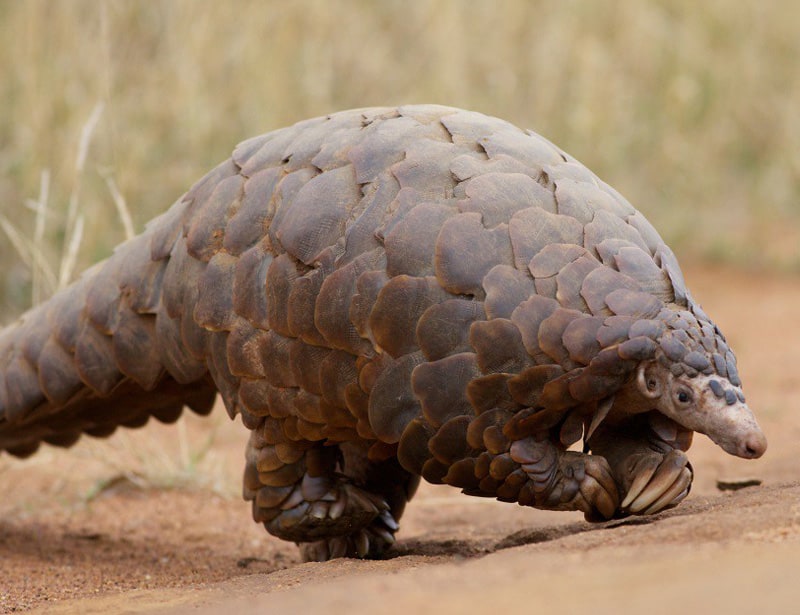
The Giant Pangolin, or the Giant Ground Pangolin, is the largest and heaviest member of the pangolin family. It measures around 5 feet long and can weigh up to 77 pounds. It is a resident throughout Sub-Saharan Africa, from the grasslands of Uganda to the forests of Kenya and the wilderness of Tanzania.
Unlike the arboreal African Pangolins, it is a burrowing animal that hides in the soil during daylight hours and comes out at night.
Moreover, the endangered Giant Pangolin feeds on ants and termites. Its powerful claws break open their nests, which scoops up by using its powerful claws to break into their nests, and its long, sticky tongue scoops up the insects. Using its size advantage, it can also destroy open termite mounds by leaning on them.
8. Ground Pangolin (Smutsia temminckii)
The Ground Pangolin, also known as the Steppe or Cape Pangolin, lives in sub-Saharan Africa's savannah and open grasslands. They are also called Temminck's pangolin in honor of Dutch zoologist Coenraad Jacob Temminck.
Aside from their fossorial lifestyle, which distinguishes them from Phataginus species, their small size easily distinguishes them from giant pangolins.
Even though they are the most widespread in the continent, ground pangolins are vulnerable due to illegal trade and habitat loss.
| 1 |
Gaubert, P., & Antunes, A. (2005). Assessing the Taxonomic Status of the Palawan Pangolin Manis culionensis (Pholidota) Using Discrete Morphological Characters. OUP Academic. |
| 2 |
Challender, D., Wu, S., Kaspal, P., Khatiwada, A., Ghose, A., Ching-Min Sun, N., Mohapatra, R.K. & Laxmi Suwal, T. (2019). Manis pentadactyla (errata version published in 2020). The IUCN Red List of Threatened Species 2019: e.T12764A168392151. |
| 3 |
Challender, D., Willcox, D.H.A., Panjang, E., Lim, N., Nash, H., Heinrich, S. & Chong, J. (2019). Manis javanica. The IUCN Red List of Threatened Species 2019: e.T12763A123584856. |
| 4 |
Mahmood, T., Challender, D., Khatiwada, A., Andleeb, S., Perera, P., Trageser, S., Ghose, A. & Mohapatra, R. (2019). Manis crassicaudata. The IUCN Red List of Threatened Species 2019: e.T12761A123583998. |
Mike is a degree-qualified researcher and writer passionate about increasing global awareness about climate change and encouraging people to act collectively in resolving these issues.
Fact Checked By:
Isabela Sedano, BEng.

